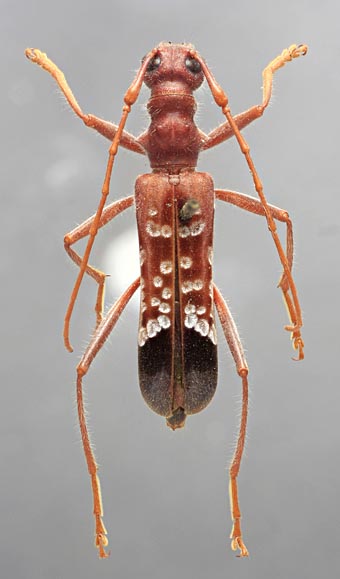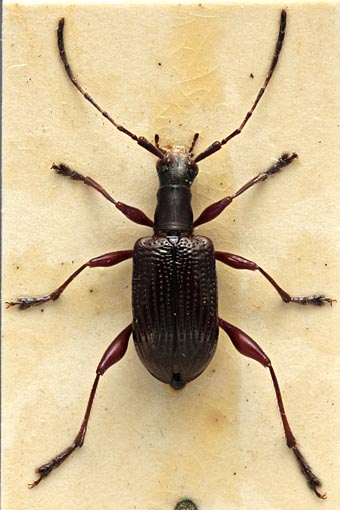|
Aphneopini Classification
Selected References to Larvae Specimens |
 Aphneope sericata Pascoe, 1863; dorsal holotype specimen Cerambycidae:Cerambycinae:Aphneopini Photograph © E.H. Nearns  Gnomodes piceus Broun, 1893; dorsal Cerambycidae:Cerambycinae:Aphneopini Photograph © E.H. Nearns |

